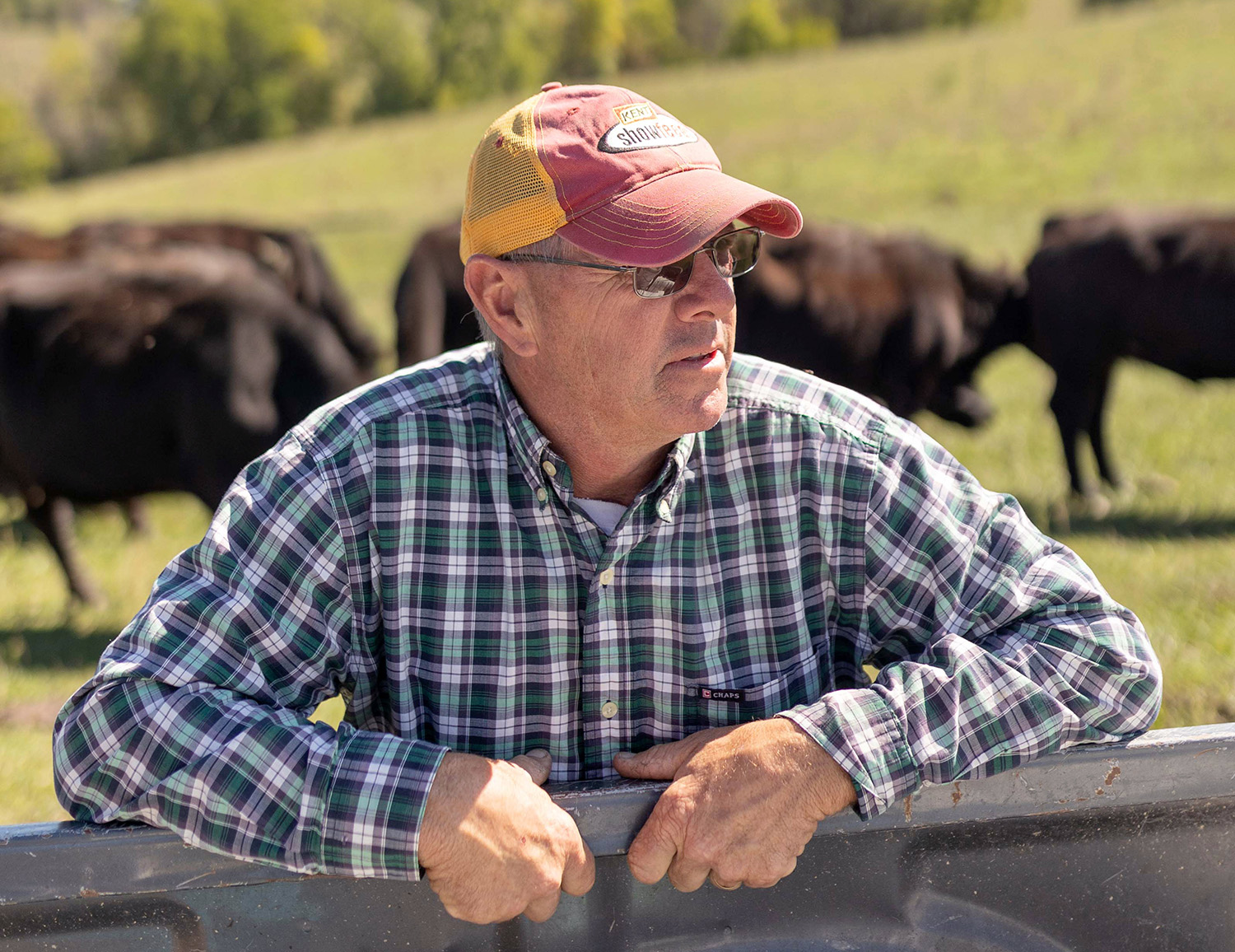
(Photo: Joclyn Bushman/Iowa Soybean Association)
President Randy Miller identifies 2023 priorities
December 1, 2022 | Bethany Baratta
Ask Randy Miller to talk about his priorities as president of the Iowa Soybean Association (ISA), and he’ll quickly turn the conversation to challenges — and opportunities — the board is engaged in on behalf of Iowa’s 40,000 soybean farmers.
Expanding soybean demand, farm bill priorities, input prices and profitability are just a few of those items.
“When we see challenges, we want to face them head-on and find a solution,” Randy says.
However, he’ll be the first to admit that he was content being a member of ISA without serving in a larger capacity. It wasn’t until he was encouraged by the ISA Producer Services team to run for the ISA board of directors that he thought about serving more fully.
“I would have never dreamed I would be here,” says Randy, who accepted the gavel from immediate ISA Past President Robb Ewoldt in August. “But yet, somebody has to do it. If we don’t do it, who will?”
Learning by doing
Though he didn’t grow up on a farm, he learned about agriculture on his grandfather’s farm.
Randy dipped his toes in farming and agriculture through 4-H and got more involved by helping a neighbor with cattle chores when their father passed away.
He joined the Pleasantville FFA chapter, where his love of agriculture grew. He worked for area farmers, planting and harvesting crops and taking care of livestock.
He soon found that he wanted to make a career in agriculture.
Randy attended Iowa State University (ISU), where he studied agriculture and ag extension.
Throughout college, he worked on various farms, even assisting with livestock shows at the Iowa State Fair. That’s where his friends set him up with Sheila Heemstra, an Iowa State Fair Queen contestant who became his wife in 1990. They moved to her family’s farm near Lacona.
Randy commuted between the farm and Ames, finishing stints at the Warren County Extension office, Laverty Elevator in Indianola and the Natural Resources Conservation Service to complete his degree requirements, all while farming in Warren County.
The next generation
After graduating from ISU, Randy devoted more time to raising crops and livestock — and a family. Children Kaylee and Kaleb joined the family; Kaylee’s pink sunglasses and Kaleb’s John Deere toy tractor still grace the floor of the combine as mementos of their childhood rides.
Now grown, Kaylee and Kaleb are still involved in agriculture. Kaylee is an ag instructor and FFA advisor at Winterset. Son Kaleb works alongside Randy on the farm.
Living to serve
Randy doesn’t consider one challenge more important than another. Instead, he says, challenges are more connected than they used to be.
“It used to be that you didn’t have to worry about much,” Randy says. “Now, you’ve got a whole row of dominoes set up, and you wait for that one domino to fall. Where it is in the row depends on its effect — some are greater than others.”
Take trade, for example. One action sets off a row of reactions that ultimately affect demand and prices farmers receive on the farm.
Soybean acres and demand are the basics of the soybean business. What does demand for biodiesel and renewable diesel mean for soybean demand? Will there be enough soybeans to serve all purposes?
What impact will the farm bill have on soybean farmers? Will biofuels have a part in the bill? How is crop insurance affected by the determinations of what’s in or out of the farm bill?
“The landscape of production agriculture is changing quickly. The scope of this legislation is very broad and impacts a farmer in many ways — addressing the farm safety net, conservation programs, trade policy, energy, rural development, research and nutrition,” he says.
Staying nimble
Randy says research will continue to be a focus in the years to come.
“We need to continue to fund projects that affect soybean farmers daily, like gall midge and soybean cyst nematode,” Randy says. “We’re always going to try to raise more bushels and create more revenue per acre, and these pest and disease challenges have a major impact on production.”
Farmers are always thinking about the next season. What about profitability in 2023? What about input costs?
Leveraging checkoff dollars has been essential in creating markets for soy — the demand for biodiesel is proof of those early efforts.
“We talk about the next thing: staying focused on growing soybeans but watching and acting on new opportunities,” Randy says.
Farmer productivity and profitability remain top of mind for the ISA board of directors, he says.
“At the end of the day, it’s about profitability; it’s a business,” Randy says. “But to see how a soybean seed can grow into a product that’s used to feed people around the world, as a fuel like in biodiesel, or in other ways, there is, to a certain extent, fulfillment.”
Back